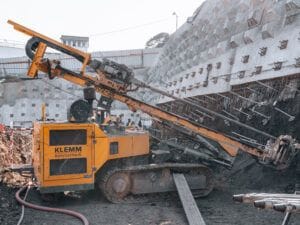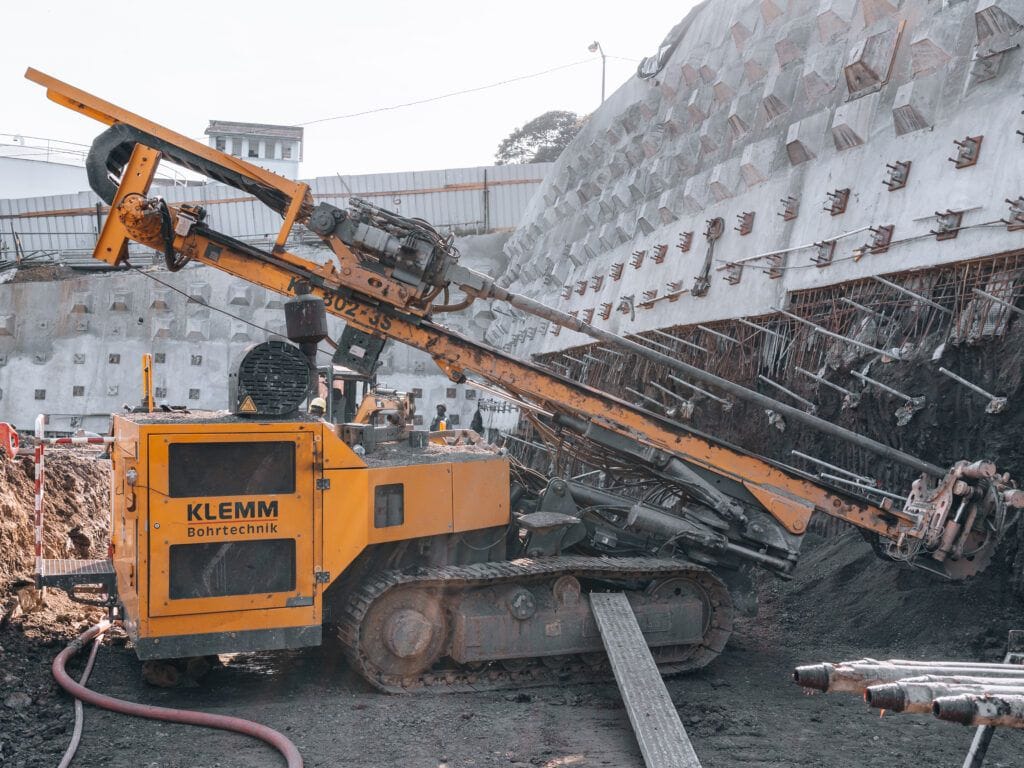A soil nail wall is a type of retaining wall that is used to stabilize slopes and support earth loads. These walls are made by inserting long, slender rods or “nails” into the soil, which are then anchored to the ground with grout or concrete. Soil nail walls offer a number of benefits over traditional retaining walls, making them an attractive option for a variety of construction projects.
Flexibility
Soil nail walls are highly flexible, making them well-suited for use in areas with unstable soil or high-water levels. Because they are anchored to the ground with nails, rather than being constructed from blocks or other materials, soil nail walls can move and shift with the soil, reducing the risk of failure. This makes them a good choice for projects in areas with a high risk of landslides or other soil-related problems.
Ease of Construction
Soil nail walls are relatively easy to construct, making them a cost-effective option for many projects. The process of installing soil nails involves drilling holes into the ground and injecting grout or concrete to anchor the nails in place. This can be done quickly and with minimal equipment, making soil nail walls a good choice for projects with tight budgets or deadlines.
Durability
Soil nail walls are highly durable, with a lifespan that is often longer than traditional retaining walls. This makes them a good choice for projects where long-term stability is a priority. Soil nail walls are resistant to weathering and erosion, and they do not require regular maintenance to maintain their structural integrity.
Versatility
Soil nail walls can be used in a variety of applications, from stabilizing slopes to supporting earth loads and retaining soil. They are particularly well-suited for use in urban areas, where space is often limited. Soil nail walls can be designed to fit into tight spaces, making them an attractive option for projects where space is at a premium.
Aesthetics
Soil nail walls can be designed to blend in with their surroundings, making them an attractive option for projects where aesthetics is a concern. Soil nail walls can be covered with vegetation or other materials, helping them to blend in with the natural environment. This can be especially useful in areas where traditional retaining walls may be unsightly or disruptive.
Top-Down Construction
One of the major benefits of soil nail walls is that they can be constructed using a top-down method. This means that the wall can be built from the top of the slope downward, rather than from the bottom up. This can be especially useful in cases where the slope is too steep or unstable to support traditional construction methods. The top-down method of construction also allows for a more efficient and cost-effective process, as it eliminates the need for large amounts of excavation and heavy equipment. In addition, the top-down method allows for a more seamless construction process, as it allows for the wall to be built in sections, rather than all at once. This can be particularly useful for projects with tight budgets or deadlines, as it allows for the work to be completed in stages.
In addition to these benefits, soil nail walls also have a number of environmental advantages. They are often more sustainable than traditional retaining walls, as they do not require large amounts of concrete or other materials. Additionally, soil nail walls can be designed to promote the growth of vegetation, which can help to improve air quality and reduce erosion. Overall, soil nail walls offer a range of benefits that make them a popular choice for many construction projects.









